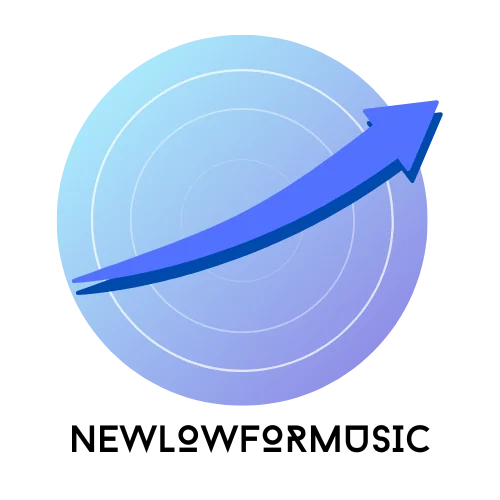Table of Contents
ToggleIn a world where healthcare costs seem to rise faster than a balloon at a birthday party, understanding healthcare economics is more crucial than ever. It’s the unsung hero that helps navigate the complex maze of medical expenses, insurance policies, and government regulations. Without it, you might as well be trying to read a menu in a foreign language while hungry—confusing and a bit terrifying.
Overview of Healthcare Economics
Healthcare economics focuses on how resources are allocated within the healthcare system. Efficiency in this system plays a crucial role in managing rising healthcare costs. Various factors contribute to cost variability, including service demand, supply shortages, and regulatory changes.
Individuals often encounter high medical expenses without adequate transparency from insurance policies. Understanding the relationship between healthcare services and their economic impact can lead to better decision-making. Insurance premiums, out-of-pocket costs, and deductibles shape patient choices significantly.
Health outcomes are directly influenced by economic principles. The allocation of resources affects the quality of care patients receive. Additionally, healthcare providers face financial pressures that can affect service delivery.
Government regulations also play a vital role in shaping healthcare economics. Policies aimed at controlling costs, such as the Affordable Care Act, impact all stakeholders in the system. These regulations attempt to balance access to care with cost-effectiveness.
Cost-effectiveness analysis helps evaluate treatment options by comparing their costs relative to their benefits. Decisions made based on these analyses often influence public health policy and funding allocation. Understanding healthcare economics equips individuals and organizations to navigate the complexities of the system effectively.
Key Components of Healthcare Economics

Understanding the key components of healthcare economics provides insight into how resources are allocated and what drives costs. This knowledge aids individuals in making informed decisions about their healthcare.
Supply and Demand in Healthcare
Supply and demand play crucial roles in shaping healthcare markets. Increased demand for services can strain resources, leading to longer wait times and higher costs. Conversely, when the supply of healthcare providers is limited, competition may decrease, further elevating prices. Price fluctuations often reflect these dynamics, influencing patients’ access to care and insurance coverage. For instance, if a breakthrough treatment gains popularity, demand surges while supply may lag, creating a scenario where costs escalate sharply. Government interventions aim to stabilize this balance, ensuring essential services remain accessible.
Cost-Effectiveness Analysis
Cost-effectiveness analysis serves as a pivotal tool in healthcare decision-making. This approach evaluates the relative costs and outcomes of different treatments or interventions. Stakeholders use it to compare expenses against the health benefits delivered. For example, a new medication may incur higher upfront costs, but it could lower overall expenses by reducing hospitalizations. Policymakers leverage cost-effectiveness data to direct funding towards the most efficient healthcare solutions. This analysis not only informs clinical practice but also shapes public health policies, optimizing resource allocation in a complex system.
Impact of Policy on Healthcare Economics
Policies significantly shape healthcare economics. Understanding their influence is critical for navigating the system effectively.
Government Regulations
Government regulations play a vital role in healthcare economics. They determine how resources are allocated, influencing service accessibility. The Affordable Care Act, for example, expanded coverage and regulated insurance to improve market dynamics. Regulations can affect how providers deliver care, affecting the quality and costs associated with services. Compliance costs for healthcare institutions also rise as they adhere to these regulations. Certainty in rules can enhance transparency, helping patients make informed decisions.
Insurance Systems
Insurance systems greatly impact healthcare economics. They dictate financial structures for both providers and patients, shaping the overall spending landscape. Various models exist, including private and public insurance, each with unique consequences for cost distribution. High-deductible plans, for instance, shift more financial responsibility onto patients, influencing care-seeking behavior. Cost-sharing strategies can affect utilization rates, where higher out-of-pocket expenses may discourage necessary care. Understanding how insurance systems operate allows stakeholders to identify cost-effective solutions and improve healthcare access.
Challenges in Healthcare Economics
Healthcare economics faces several significant challenges impacting quality and access. Understanding these challenges is crucial for navigating the complex landscape of healthcare services.
Rising Costs
Rising healthcare costs pose a major challenge for individuals and systems. Data shows that U.S. healthcare spending reached $4.3 trillion in 2021, accounting for 19.7% of the GDP. Increased prices for medical services and prescription drugs contribute to the financial burden. Patients often experience high out-of-pocket expenses, leading to delayed care or skipped treatments. Health insurers implement higher premiums and deductibles, further straining budgets. Additionally, administrative costs in healthcare systems contribute to overall expenditure. Overall, rising costs necessitate improved resource allocation and efficiency strategies to ensure sustainability and access.
Access to Healthcare
Access to healthcare remains a persistent challenge for many. An estimated 30 million Americans lack health insurance, limiting their ability to seek necessary care. Geographic disparities also affect access, particularly in rural areas where providers are scarce. Limited availability of specialists may force patients to travel long distances, complicating timely treatment. Economic barriers often prevent individuals from pursuing preventive services, resulting in worsening health outcomes. Effectively addressing these access issues requires policy reforms focused on equity and affordability, ensuring all individuals can receive appropriate medical care.
Future Trends in Healthcare Economics
Healthcare economics is on the brink of transformation due to several emerging trends. Advanced technology, particularly telemedicine, is expanding access to care while reducing costs. Efficiency improves with remote consultations, allowing patients to receive care without geographical constraints.
Artificial intelligence optimizes resource allocation, streamlining administrative processes and enhancing decision-making. Machine learning models predict patient needs, ultimately lowering unnecessary expenditures. Automation in claims processing decreases administrative overhead, which can benefit both providers and patients.
Value-based care is shifting focus from volume to quality. This approach incentivizes healthcare providers to improve patient outcomes rather than merely increase service quantity. Financial rewards align with the goal of delivering effective care.
Insurance models are evolving as well. High-deductible plans are becoming more prevalent, shifting greater financial responsibility to patients. Patients are likely to become more discerning with care decisions, considering costs more carefully than ever before.
Policy reforms are gaining traction to improve equity in healthcare access. Legislative efforts aimed at reducing costs and expanding coverage are critical as rising U.S. healthcare spending reached $4.3 trillion in 2021. The need for comprehensive solutions to address barriers remains crucial.
Healthcare systems are influenced significantly by population health management. This trend integrates social determinants into care strategies, ensuring communities receive tailored support. Focus on mental health and preventive care is also increasing, further enhancing overall public health.
Understanding these trends in healthcare economics empowers stakeholders to make informed decisions. Knowledge of the evolving landscape is essential for navigating the complexities of the system effectively. Grasping these principles leads to improved health outcomes and cost-efficiency for all involved.
Grasping the fundamentals of healthcare economics is essential for navigating today’s complex medical landscape. As costs continue to rise and access to care becomes more challenging, understanding economic principles can empower individuals to make informed decisions.
The interplay between resource allocation, insurance models, and government regulations shapes the healthcare experience. Stakeholders must stay attuned to emerging trends like telemedicine and value-based care, which promise to enhance access and improve outcomes.
Ultimately, a deeper awareness of healthcare economics not only benefits patients but also contributes to a more efficient and equitable healthcare system for everyone.







